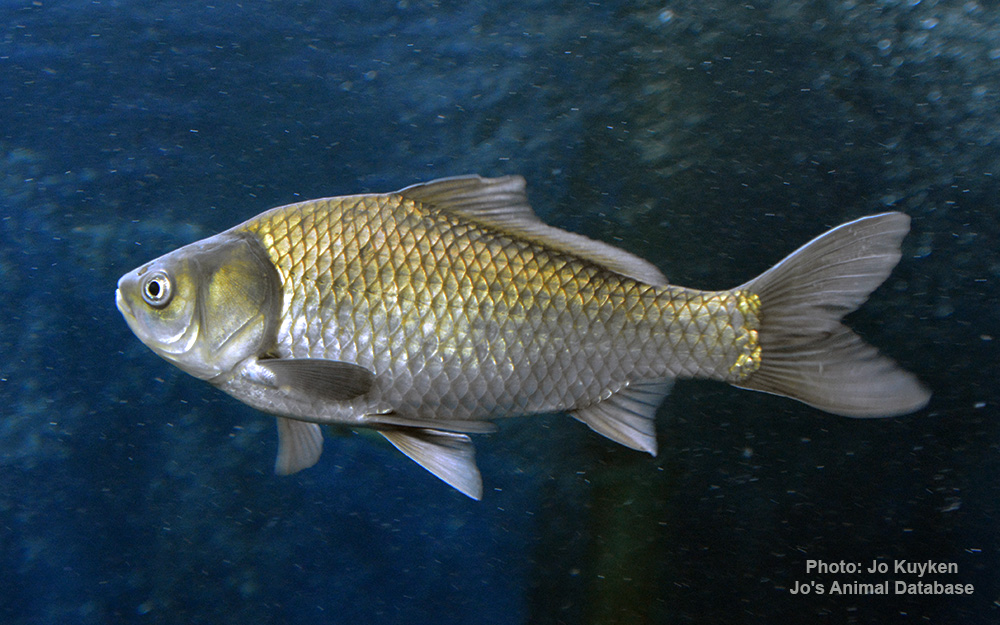Japanese white crucian carp
(Carassius cuvieri)

Image source: Jo's Animal Database
Classification
The Japanese white crucian carp, also known as Japanese carp, white crucian carp, or gengoro-buna (Carassius cuvieri), is a species of freshwater fish in the carp family (family Cyprinidae). It is found in Japan and, as an introduced species, in several other countries in Asia. This fish is closely related to the commonly known goldfish.
Description
This is a medium fish, growing up to 50 cm, with a broad head and a blunt snout. The lips are fleshy, and lacking barbels. The body is deep and laterally compressed, with a distinctly humped back. The scales are large and cycloid in shape, with a complete lateral line. Serration is present on the last ray of the dorsal and anal fins, and the caudal fin is forked.
Taxonomy
The Japanese white crucian carp was formerly considered a subspecies of wild goldfish, and was classified as C. auratus cuvieri. It has now been elevated to species rank, however some authors are in disagreement. Genetic studies using mitochondrial DNA indicate that this species diverged from the ancestral form approximately one million years ago, during the early Pleistocene.
The original wild species unique to Lake Biwa is called gengorō-buna. Fossil pharyngeal teeth that appear to belong to ancestral form of Japanese white crucian carp have been found in the upper part of the Katata Formation, derived from sediment layers of the former Paleo-lake Katata, on the southwest shore of Lake Biwa.
Distribution and habitat
Historically, the Japanese white crucian carp was endemic to Lake Biwa, as well as the connected Yodo River system, in Japan. However, it has been introduced to Taiwan and Korea. In South Korea initial introductions were the result of stocking by government agencies. Subsequently, the species has also been spread through the Buddhist practice of \\\"life releasing\\\", in which animals destined for slaughter are instead released into the wild.
Possession of this species without a permit is prohibited in the state of Vermont.
It is a freshwater fish, preferring still or slow moving waters, and occurs at depths up to 20 meters. Typical habitats include lakes, canals, and backwaters.










